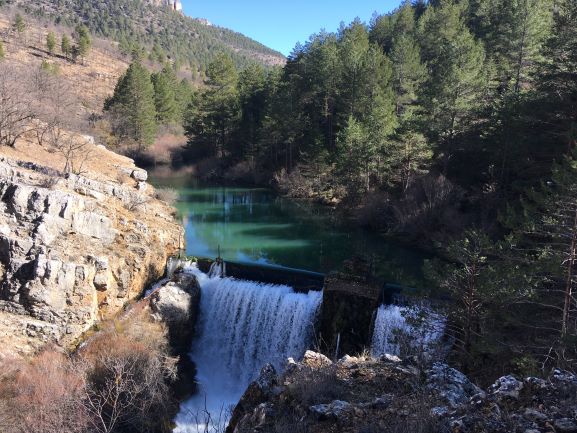There is massive potential of barrier removal to restore free-flowing rivers and revive fish populations in Europe, according to a new report published today by WWF.
European rivers are the most fragmented in the world, according to the report. Barriers in rivers for different purposes - such as dams for hydroelectric power - are one of the main reasons for rivers failing to reach good ecological status under the EU Water Framework Directive and are a key cause for the almost total decline of European freshwater migratory fish populations in the last decades.
The report analyses a sample of 30,000 barriers with at least 0,5 meters height on large and medium-sized rivers in Europe and assesses their reconnection potential. The sample totals less than 3% of Europe’s estimated 1 million barriers. Some barriers are equipped with fish passes.
The report identified more than 7360 barriers with a reconnection potential, making a total of nearly 50,000 km of rivers that have a high and good potential to be made free-flowing again. According to the WWF, this potential is already double the current target of 25,000 km set by the European Commission in the 2030 Biodiversity Strategy for the whole EU.
Is it realistic to remove dams that produce renewable energy? “We have excluded hydropower plants of a capacity above 10 MW, as these infrastructures are usually sensitive to public opinion and decision-makers,” Claire Baffert, Senior water Policy Officer at WWF European Policy Office told The Brussels Times. Drinking water reservoirs, bridges and road crossings were also excluded.
However, in WWF’s view, decommissioning hydropower plants can be a cost-effective and realistic option, especially when compared with the investment that would be needed to invest in renovating/maintaining an ageing plant. This is especially true for small hydropower plants whose contribution to electricity generation is negligible.
A recent example is the Myllykoski hydropower plant in Finland which soon will cease operating, allowing threatened brown trout free access to extensive watercourse and lake areas.
The impact on navigation and transport after removing river barriers is very site-specific. “In some cases, barriers were built to regulate the flow and to facilitate navigation. In other cases, removing dams will improve conditions for navigation.”
Which countries are most affected by the barriers? “The highest density of barriers occurs in the heavily modified rivers of Central Europe, while relatively barrier-free rivers can still be found in the Balkans, the Baltic states, and parts of Scandinavia and southern Europe,” Claire Baffert replied.
“The analysis makes clear that the European Commission in its Restoration Law should aim much higher than its current target, to maximize restoration potential for freshwater ecosystems,” commented Andreas Baumüller, Head of Natural Resources at WWF European Policy Office
The Commission is expected to release a proposal for legally binding EU nature restoration targets by the end of 2021. The WWF calls on the EU to “include an ambitious target on free-flowing river restoration through barrier removal as this is crucially needed to halt the decline in freshwater biodiversity and complement the requirements set by the Water Framework Directive”.
M. Apelblat
The Brussels Times

